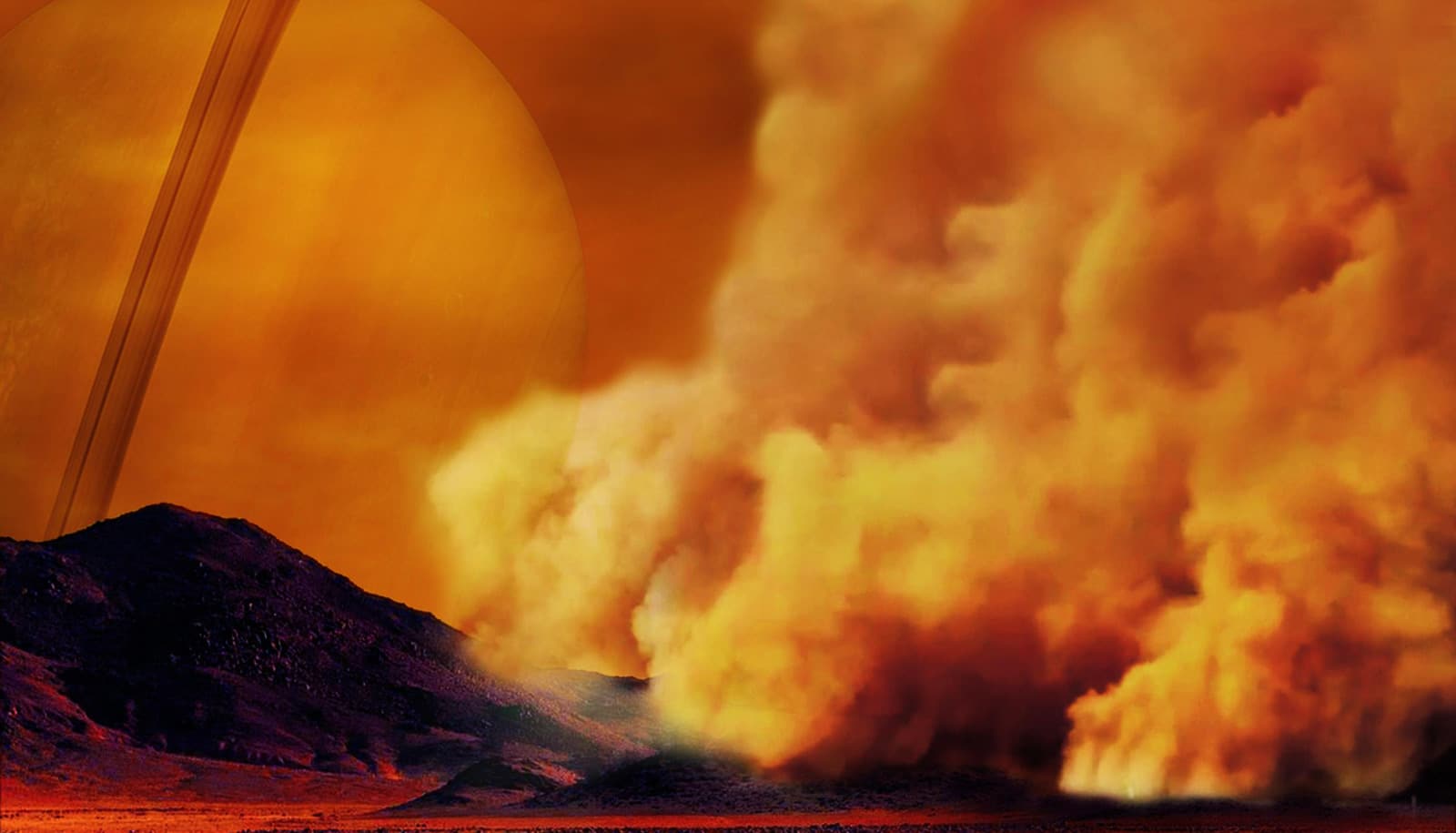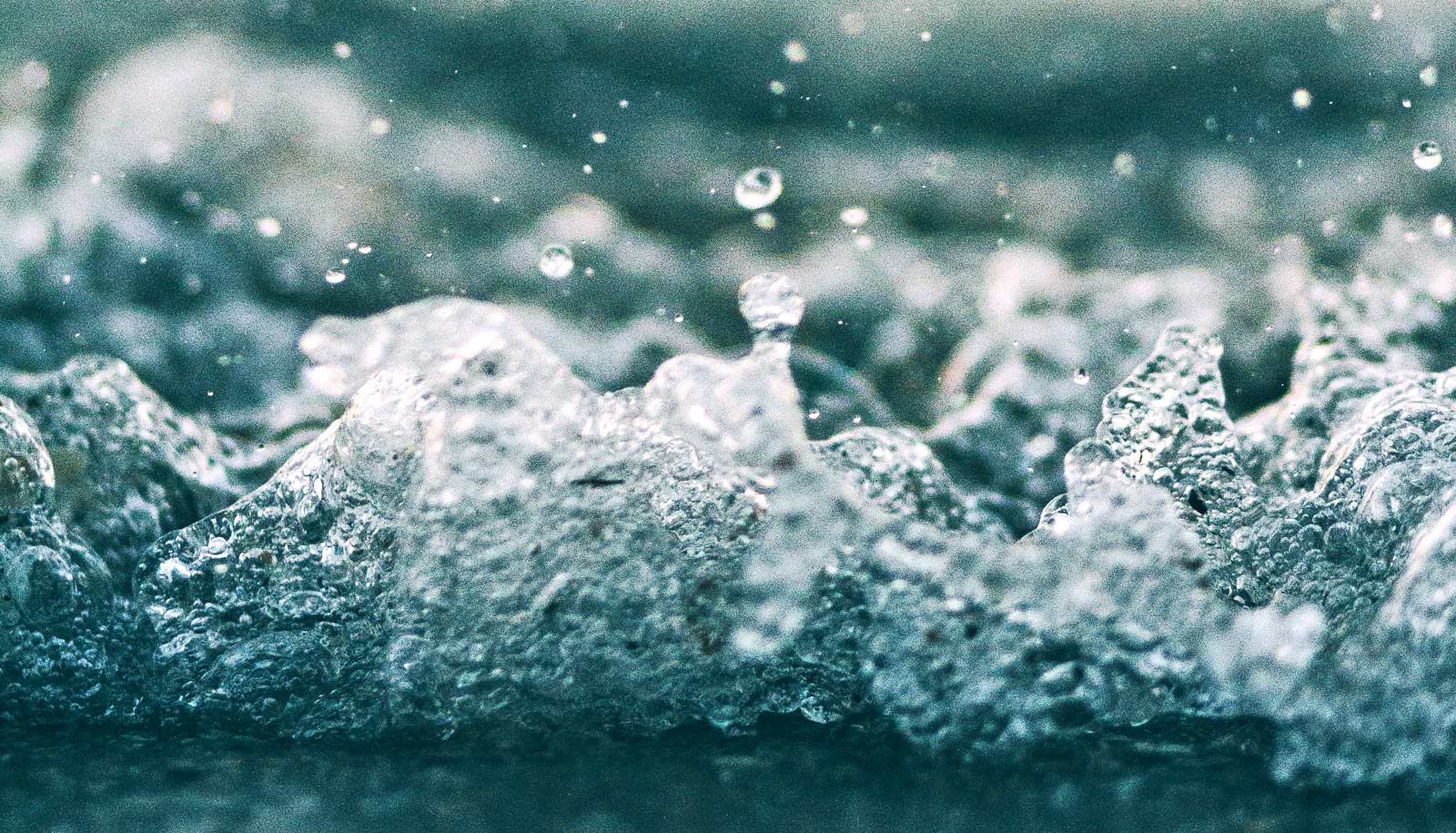Scientists have discovered an ice corridor that wraps nearly halfway around Titan, Saturn’s largest moon.
Rain, seas, and a surface of eroding organic material exist on both Earth and Titan. However, on Titan it’s methane, not water, that fills the lakes with slushy raindrops.
On Titan, sunlight continuously breaks apart atmospheric methane. The resulting atmospheric haze settles to the surface and accumulates as organic sediments, rapidly depleting the atmospheric methane. The material of past atmospheres makes up the organic veneer.
There is no obvious source of methane, except from the evaporation of methane from the polar lakes. But Titan’s lakes contain only one-third of the methane in its atmosphere and geological time scales will exhaust them soon.
One theory is that subsurface reservoirs that vent methane into the atmosphere could supply the methane. Prior studies of Titan indicate the presence of a singular region called Sotra, which looks like cryo-volcano, with icy flow features.
Caitlin Griffith, a professor in the Lunar and Planetary Laboratory at the University of Arizona, and colleagues set out to study the composition of Titan’s surface, partly hoping to find subtle small cryo-volcanos candidates. They analyzed half of Titan’s surface and detected none, but they found Sotra exhibits the strongest ice features.
Yet researchers did not expect the major ice feature they found: a linear ice corridor that wraps around 40 percent of Titan’s circumference.
“This icy corridor is puzzling, because it doesn’t correlate with any surface features nor measurements of the subsurface,” says Griffith, lead author of the paper in Nature Astronomy.
“Given that our study and past work indicate that Titan is currently not volcanically active, the trace of the corridor is likely a vestige of the past. We detect this feature on steep slopes, but not on all slopes. This suggests that the icy corridor is currently eroding, potentially unveiling presence of ice and organic strata.”
The team’s analysis also indicates a diversity of organic material in certain regions. These surface deposits are of interest because laboratory simulations of Titan’s atmosphere produce biologically interesting compounds such as amino acids.
Griffith analyzed tens of thousands of spectral images taken of the topmost layer of the surface by Cassini’s Visible and Infrared Mapping Spectrometer, using a method that enabled the detection of weak surface features.
Griffith’s application of the principal components analysis, or PCA, allowed her to tease out subtle features caused by ice and organic sediments on Titan’s surface from the ubiquitous haze and more obvious surface features. Instead of measuring the surface features individually for each pixel in an image, the PCA uses all of the pixels to recognize the main and subtler signatures.
The researchers compared their results with past studies including the Huygens probe, which landed on Titan in 2005. The comparison validated both the technique and the results. Plans are underway to use the technique to explore the poles where methane seas reside.
“Both Titan and Earth followed different evolutionary paths, and both ended up with unique organic-rich atmospheres and surfaces,” Griffth says. “But it is not clear whether Titan and Earth are common blueprints of the organic-rich of bodies or two among many possible organic-rich worlds.”
A portion of the funding for the research came from NASA space grants.
Source: Mikayla Mace for the University of Arizona



